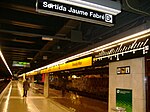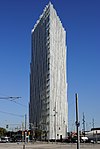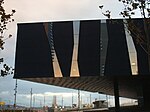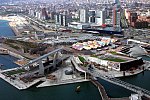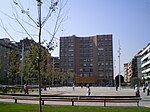El Besòs i el Maresme
Neighbourhoods of BarcelonaProvince of Barcelona geography stubsSant Martí (district)

El Besòs i el Maresme is a neighborhood in the Sant Martí district of Barcelona, Catalonia (Spain). Originally the land had been irrigated by the irrigation of the burrow and the Verneda, remains of an old arm of the river Besòs that empties into the Camp de la Bóta. The neighborhood stretches along the Rambla de Prim. In the neighborhood there is part of the Parc del Fòrum, built for the event of 2004 Universal Forum of Cultures and there will be built the campus Diagonal-Besòs and Zoo Marine.
Excerpt from the Wikipedia article El Besòs i el Maresme (License: CC BY-SA 3.0, Authors, Images).El Besòs i el Maresme
Ronda de Sant Ramon de Penyafort,
Geographical coordinates (GPS) Address Nearby Places Show on map
Geographical coordinates (GPS)
| Latitude | Longitude |
|---|---|
| N 41.419961111111 ° | E 2.2161472222222 ° |
Address
Ronda de Sant Ramon de Penyafort
Ronda de Sant Ramon de Penyafort
08930
Catalonia, Spain
Open on Google Maps
